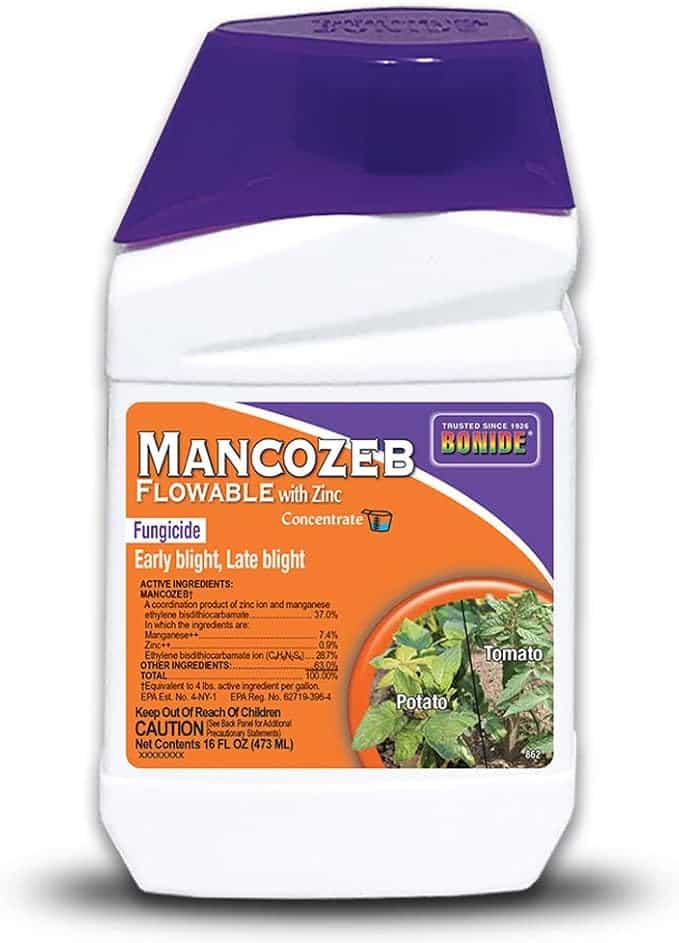Table of Contents
In the intricate world of agriculture, the war against fungal diseases never ends. As farmers strive to keep their crops healthy, they turn to a host of tools, one of which is the unique class of wettable powder fungicides.
Wettable powder fungicides, with their distinctive formulation and diverse applications, stand as an important ally in safeguarding crops against destructive fungi. Their prominence traces back to a deep-rooted history and an unwavering commitment to innovation.
A Glimpse into the Past
The origin of wettable powder fungicides dates back to the early 20th century, when the battle against crop diseases was becoming more complex. As the need for effective fungicides grew, scientists began experimenting with various formulations, leading to the development of wettable powders. These formulations offered a perfect balance between efficiency, safety, and ease of application, quickly finding their place in modern agriculture.
Why Wettable Powder Fungicides?
The choice of wettable powder fungicides over other formulations is no accident. Unlike other types that might dissolve entirely or be difficult to handle, wettable powders provide the advantage of easy mixing and controlled release. The particles form a suspension in water that adheres exceptionally well to plant surfaces, offering prolonged protection against a wide range of fungal pathogens.
Composition and Formulation
The magic of wettable powder fungicides lies in their unique composition and formulation. They are not merely dry substances sprinkled onto plants; instead, they present a scientific marvel that allows for precise control, delivery, and performance.
Ingredients and How They Are Formulated
Wettable powder fungicides comprise several key ingredients, each playing a vital role in their functionality:
- Active Ingredient: This is the core component that fights the fungal disease. It’s carefully chosen based on its effectiveness against specific fungi.
- Surfactants: These substances enable the powder to be mixed with water, creating a stable suspension that can be sprayed onto plants.
- Fillers: Often made from clay or other inert materials, fillers add bulk to the formulation, ensuring an even distribution of the active ingredient.
- Other Additives: Additional substances might be added to enhance various properties such as stability, adherence to plant surfaces, or resistance to environmental conditions.
The formulation process involves careful grinding and mixing of these ingredients to create a powder with uniform particle size. This ensures that when mixed with water, the suspension forms evenly, allowing for consistent coverage on plants.
Comparison with Other Types of Fungicides
Wettable powder fungicides stand apart from other formulations like emulsifiable concentrates, granules, or soluble powders in several ways:
- Solubility: Unlike soluble powders, wettable powders don’t dissolve in water but form a suspension, offering unique handling and application characteristics.
- Adherence: Wettable powders typically adhere better to plant surfaces compared to liquid formulations, providing extended protection.
- Safety: The dry nature of wettable powders often means less risk of skin absorption for handlers, enhancing safety protocols.
These distinctions make wettable powder fungicides a versatile and valuable tool in various agricultural settings.
Applications and Uses
The versatility of wettable powder fungicides extends far and wide in the realm of agriculture. From vast fields of wheat to delicate orchids in a greenhouse, these fungicides find myriad applications.
Crops and Plants Where They Are Most Effective
Wettable powder fungicides are used across a wide range of crops and ornamental plants. They are particularly effective on:
- Cereals: Including wheat, barley, and oats, where they control diseases like rust and smut.
- Fruit Trees: Such as apples and pears, providing protection against scab and powdery mildew.
- Vegetables: Including tomatoes, peppers, and cucumbers, guarding against various blights and rots.
- Ornamental Plants: Used in greenhouses or gardens to keep flowers and shrubs free from fungal diseases.
Different Methods of Application
Depending on the type of crop and the specific fungal problem being addressed, different methods of application may be employed:
- Spraying: Most commonly, wettable powders are mixed with water and sprayed onto the crop using various types of sprayers.
- Dusting: In some cases, the dry powder might be applied directly to the plants, especially in small-scale gardening or specialized agriculture.
- Drip Irrigation: For systemic fungicides, mixing with irrigation water allows the fungicide to be delivered directly to the roots.
Each method requires careful consideration of the concentration, timing, and environmental factors to achieve the best results.
Environmental and Safety Considerations
While wettable powder fungicides have brought great strides in crop protection, their use also carries with it some critical environmental and safety considerations. A responsible approach to using these fungicides requires understanding these aspects.
Environmental Impact
The use of fungicides, including wettable powders, has potential impacts on the environment that must be managed carefully:
- Soil: Excessive use of fungicides can affect soil health by disrupting microbial populations, potentially reducing soil fertility.
- Water: Runoff containing fungicides might contaminate local water bodies, affecting aquatic life and potentially drinking water supplies.
- Non-Target Organisms: Care must be taken to avoid harming non-target organisms, such as beneficial insects or neighboring plants.
Many modern wettable powder fungicides are formulated with these concerns in mind, utilizing active ingredients that are less harmful to the environment and applying them in ways that minimize potential impacts.
Safety Considerations for Handlers and Users
The handling, mixing, and application of wettable powder fungicides require careful attention to safety. Here are some common precautions:
- Personal Protective Equipment (PPE): Wearing appropriate PPE such as gloves, masks, and goggles is essential to prevent skin, eye, and respiratory exposure.
- Proper Storage: Storing wettable powder fungicides in secure, dry places away from children and pets helps prevent accidental exposure.
- Following Instructions: Adhering to manufacturer’s guidelines on mixing, application rates, and timing ensures that the fungicides are used safely and effectively.
Observing these safety practices helps protect not only the individual user but also others who may be exposed, as well as the surrounding environment.
Leading Products and Manufacturers
Over the years, the market for wettable powder fungicides has evolved with innovative products and formulations from leading manufacturers. Here’s a look at some renowned products and the companies behind them.
Top Wettable Powder Fungicides
While the choice of a particular product depends on the specific crop and fungal disease, some wettable powder fungicides have gained prominence for their efficacy and versatility:
- Mancozeb: A widely-used fungicide, effective against a broad spectrum of diseases.
- Copper Oxychloride: Often used in organic farming, it’s known for its effectiveness against various blights and mildews.
- Sulfur: An age-old fungicide, especially useful against powdery mildew in various crops and ornamentals.
Major Manufacturers
Several global companies have been at the forefront of developing and marketing wettable powder fungicides:
- Bayer Crop Science: A leader in the agricultural industry, offering a wide array of fungicides, including wettable powders.
- Syngenta: Renowned for its innovative solutions in crop protection, including various wettable powder formulations.
- BASF: With a strong focus on sustainable agriculture, BASF offers wettable powder fungicides designed with both efficacy and environmental considerations in mind.
These manufacturers, along with others, continue to drive innovation, providing farmers and gardeners with effective tools to combat fungal diseases.
Future Trends and Innovations
The field of wettable powder fungicides is not static. Innovations are constantly being made to enhance their effectiveness, reduce their environmental impact, and make them more user-friendly. Let’s explore some of the exciting trends shaping the future of this field.
Environmentally Friendly Formulations
There is a growing trend towards developing fungicides that are less harmful to the environment. These include formulations that:
- Break Down Quickly: Minimizing the persistence in the environment.
- Target Specific Fungi: Reducing the impact on non-target organisms.
- Utilize Natural Ingredients: Such as biological fungicides derived from bacteria or fungi that are less toxic to other organisms.
Smart Application Technologies
The way wettable powder fungicides are applied is also undergoing a revolution. The integration of technology allows for:
- Precision Spraying: Using drones or smart sprayers that can target specific areas of a crop, reducing waste and exposure to non-target plants.
- Data-Driven Decisions: Utilizing sensors and data analytics to determine the optimal time and rate of application.
- Automated Mixing and Application: Reducing the risk of human exposure and ensuring consistent, accurate mixing and application.
Integrated Pest Management (IPM)
Wettable powder fungicides are increasingly being used as part of Integrated Pest Management (IPM) strategies, which combine chemical, biological, and cultural practices to manage diseases more sustainably:
- Using Fungicides Judiciously: Only when necessary, and in combination with other practices like crop rotation or resistant varieties.
- Monitoring and Thresholds: Applying fungicides based on careful monitoring and established thresholds, rather than on a fixed schedule.
- Education and Training: Educating farmers and applicators about best practices to ensure that fungicides are used effectively and responsibly.
The combination of these trends and innovations paints an exciting picture for the future of wettable powder fungicides. As technology advances and our understanding of ecology and biology deepens, we can expect even more effective, efficient, and environmentally friendly ways to control fungal diseases in agriculture.



